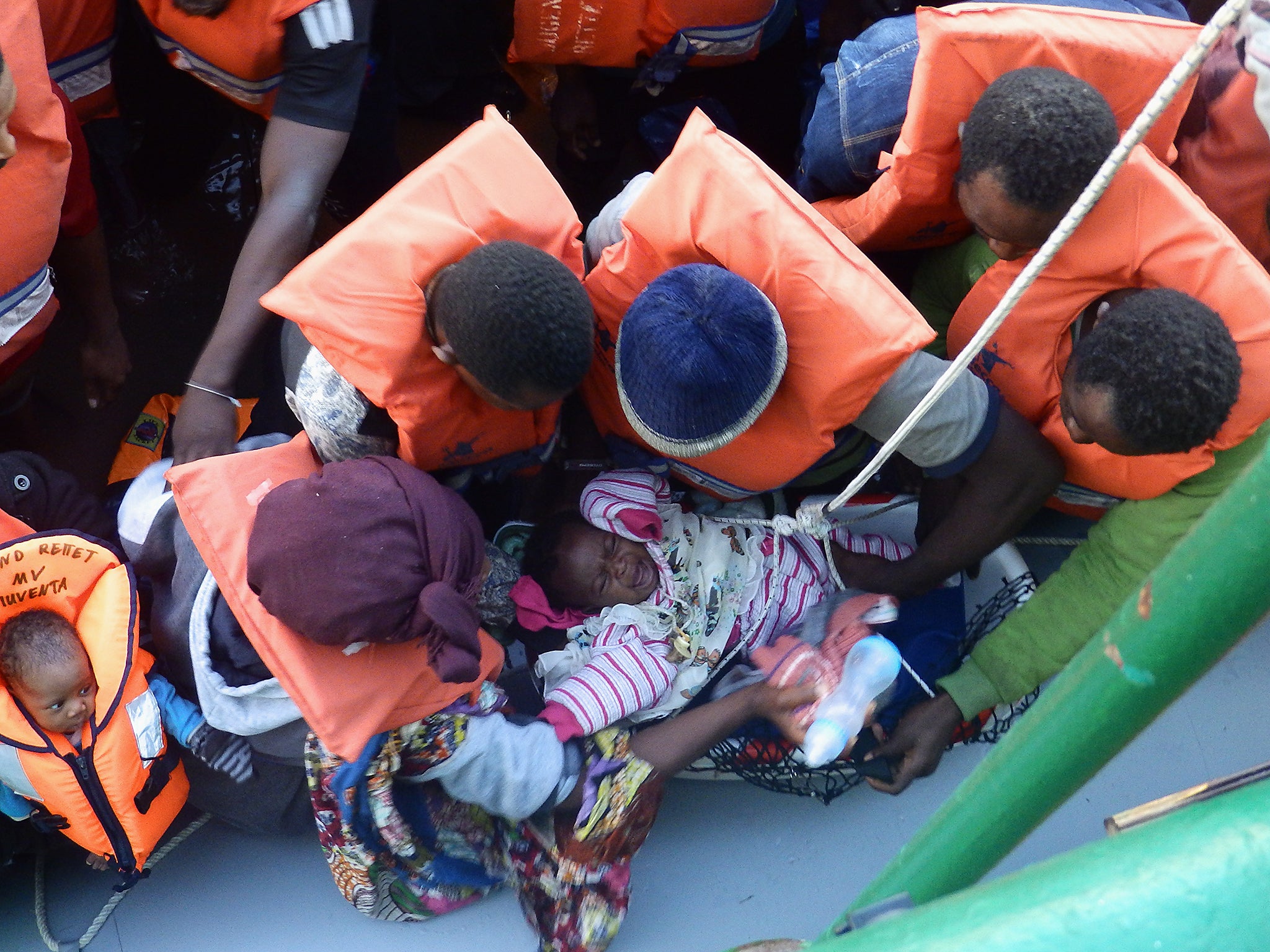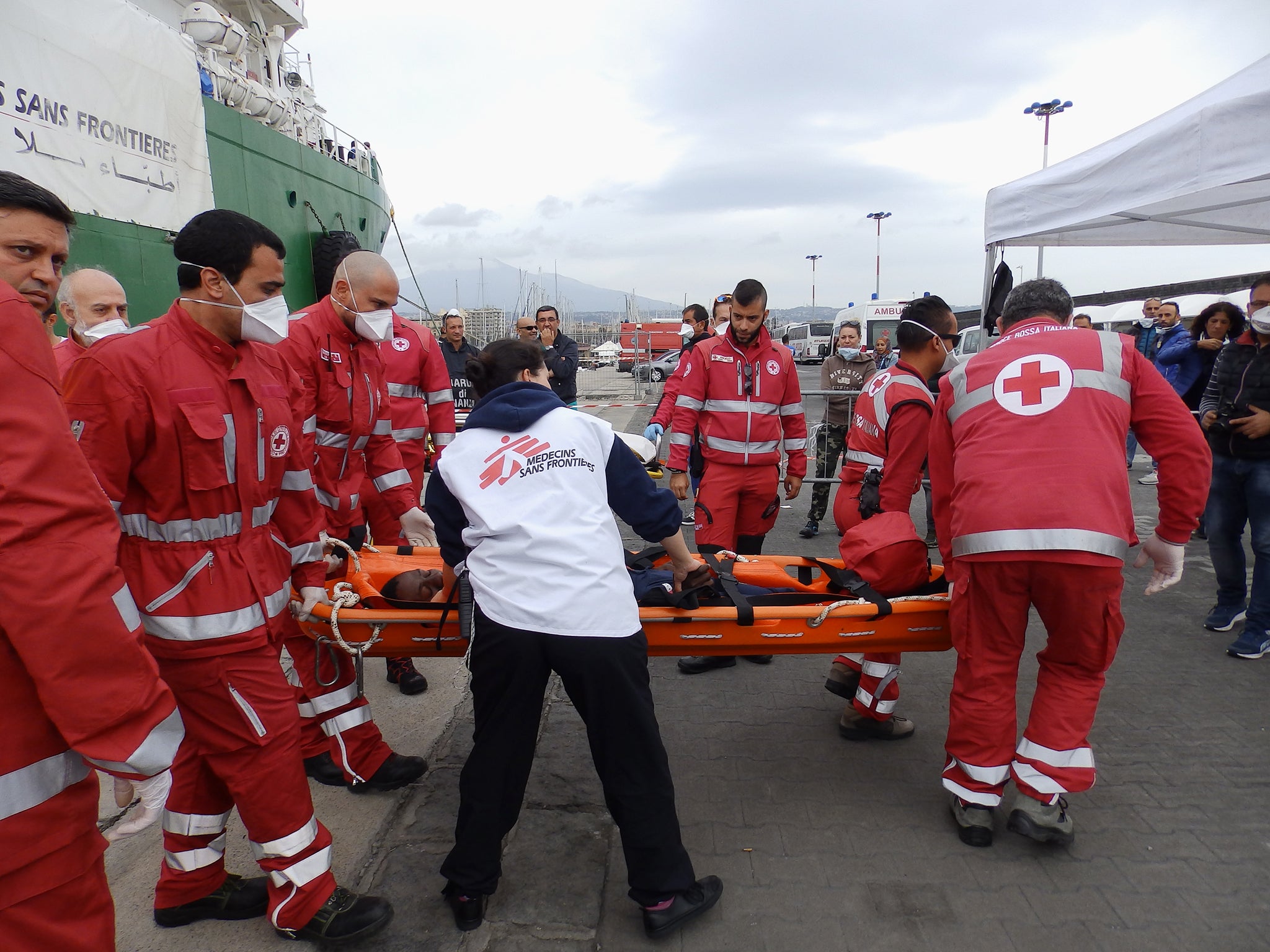Refugees dying from hypothermia as deadly Mediterranean boat crossings continue into winter
Crisis shows no sign of slowing as smugglers launch dinghies in treacherous conditions

Your support helps us to tell the story
From reproductive rights to climate change to Big Tech, The Independent is on the ground when the story is developing. Whether it's investigating the financials of Elon Musk's pro-Trump PAC or producing our latest documentary, 'The A Word', which shines a light on the American women fighting for reproductive rights, we know how important it is to parse out the facts from the messaging.
At such a critical moment in US history, we need reporters on the ground. Your donation allows us to keep sending journalists to speak to both sides of the story.
The Independent is trusted by Americans across the entire political spectrum. And unlike many other quality news outlets, we choose not to lock Americans out of our reporting and analysis with paywalls. We believe quality journalism should be available to everyone, paid for by those who can afford it.
Your support makes all the difference.Refugees are dying of hypothermia as thousands continue desperate attempts to cross the Mediterranean Sea in plummeting temperatures and worsening winter weather.
While European leaders have hailed the “success” of a deal aiming to stop migrant boats being launched from Turkey to Greece, the number of asylum seekers taking the longer and more treacherous route from Libya to Italy has increased dramatically.
More than 4,700 refugees have died attempting sea journeys to Europe this year, of drowning, fuel inhalation and suffocation in overcrowded dinghies. Now, the cold itself is taking lives.
At least two women have been killed by hypothermia in the past week. Rescuers with the medical charity Médecins Sans Frontières (MSF) said it was the first time they had seen refugees die from the condition.
Helmi Emmen, a nurse on the Aquarius search and rescue ship, said they were found on a rubber dinghy packed with around 120 migrants off the coast of Libya on Sunday.
It was only after around 60 people had been rescued from the boat that medics saw two women lying on the floor. One was not breathing and was pronounced dead following attempts at CPR on the deck.
“The other woman was still breathing and had a pulse,” said Ms Emmen. “We put her on oxygen but she stopped breathing and her pulse was going down. We didn’t succeed in saving her.”
Both women were young and thin, most probably undernourished from their long journey and stay in Libya, and were wearing only thin T-shirts as a defence against the cold and water filling the boat.
“It is the first time we have seen a hypothermia death but we expect this to happen more,” Ms Emmen said. “We are trying to be prepared for it.”
The Italian coast guard discovered 11 more bodies in another boat on Tuesday, while a commercial ship carrying out a separate rescue found three people dead.
As well as the danger of boats capsizing or starting to sink in rough seas, several disasters this year have been caused by fuel spills giving off toxic fumes and causing severe chemical burns.
Many refugees are weakened by malnutrition, disease and injuries from Libya, where many are detained, beaten and tortured by gangs exploiting thousands of migrants trapped in the country by its ongoing civil war.
Some of those The Independent met on a rescue ship earlier this month said they had not wanted to depart in rough seas but were forced into boats at gunpoint by armed gangs.
Andrej Mahecic, from the UN Refugee Agency (UNHCR), said warnings to European leaders about the “soaring” death toll had fallen on deaf ears.
“The likelihood of dying has spiralled in 2016 to one in every 88. Last year it was one in 269,” he told The Independent.
“For the Central Mediterranean route from Libya to Italy is even higher, it is one death to almost every 47 arrivals.”
Mr Mahecic said refugees were taking “longer and more perilous” routes to Europe following the EU-Turkey deal, with smugglers switching from wooden boats to flimsy dinghies to lower costs and evade detection by authorities.
Research by the Unravelling the Mediterranean Migration Crisis (Medmig) project partly blamed Britain and other European nations for record deaths, concluding that the refusal to open up legal routes for those seeking safety in Europe has increased demand for people smuggling on ever more dangerous routes.
But there has been no repeat of the public outrage sparked by the death of Alan Kurdi, the three-year-old Syrian boy whose body washed up on a Turkish beach after a boat carrying his family to Greece sank in 2015.
Rob MacGillivray, Save the Children’s head of rescue operations, said the refugee crisis had become the “biggest non-story” he has ever seen as Europe’s attention turns elsewhere.

“It is desperately frustrating,” he added. “Saving people’s lives at sea is probably the most fundamental humanitarian action you can take part in, it’s governed by international law.
“Our presence in the Mediterranean is reflective of a failure of European countries to do the rescue work.”
In previous years, the onset of winter weather has caused a sharp decline in the number of boats sent by smugglers into the Central Mediterranean, now the deadliest sea passage in the world.
But although crossings to Greece have slowed to a trickle as migrants are detained under the threat of deportation, the number arriving in Italy has exploded.
More than 27,000 asylum seekers were rescued and taken ashore in October, compared to under 9,000 in the same month of 2015, while the figure in November was 13,400 – an increase of 10,000 on the year before.
Boats have shown no sign of stopping in December, with up to 800 migrants rescued every day in the Mediterranean.
At least four died after an inflatable boat capsized between Morocco and Spain on Wednesday, and a group of 27 Syrian refugees including a pregnant women and children from the city of Aleppo were towed shore in Cyprus the previous day.
Of more than 350,000 migrants and refugees to have arrived by sea in Europe this year, a quarter are Syrian, 13 per cent from Afghanistan and others from countries including Nigeria, Iraq, Eritrea, Pakistan and Guinea.
As the treacherous crossings continue, almost all rescue boats have pulled out of the search zone off the coast of Libya for the winter, making it increasingly likely refugee vessels will not be spotted by authorities and sink without a trace.
Ms Emmen said SOS Mediterranee’s Aquarius was the only humanitarian ship left in the Mediterranean, leaving the Italian Maritime Rescue Coordination Centre to deploy inexperienced commercial and naval ships to dinghies in distress.
She added: “It doesn’t seem like the boats are going to stop.”
Join our commenting forum
Join thought-provoking conversations, follow other Independent readers and see their replies
0Comments